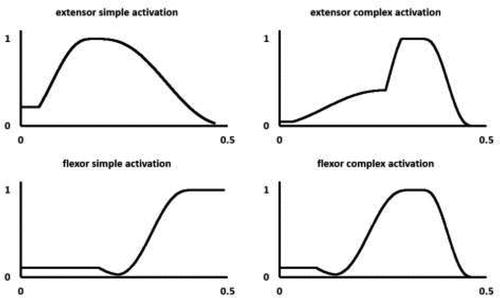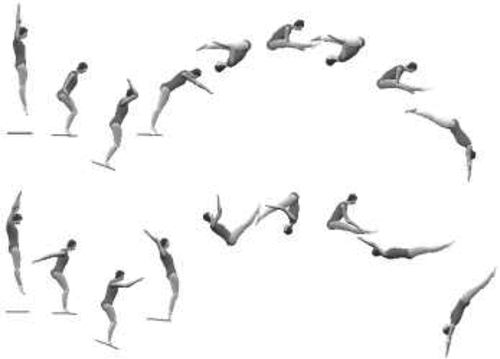Figures & data
Figure 1. Takeoff for forward somersaulting springboard dive (upper sequence) and reverse somersaulting springboard dive (lower sequence), showing hurdle takeoff, hurdle flight, hurdle landing, maximum board depression, dive takeoff, and flight.

Figure 2. Simple and complex activation profiles for the joint torque generators. For the extensors the simple profile comprised a ramping up and then a ramping down of the activation level whereas the complex profile allowed a double ramp up. For the flexors the simple profile comprised a ramping down followed by a ramping up of the activation profile whereas the complex profile allowed a final ramping down.

Table 1. Overall and joint angle difference scores for the various matching simulations
Table 2. Comparison of isometric strength parameters [Nm] determined from the matching of the two dives
Table 3. Complexity of torque generator activation profiles determined from the matchings of the two dives
Table 4. Touchdown, lowest point and takeoff kinematics for the maximal rotating forward and reverse dives: Mass centre horizontal distance from the toes, horizontal velocity of the mass centre, vertical velocity of the mass centre, angular momentum about the mass centre, trunk angle, joint angles

